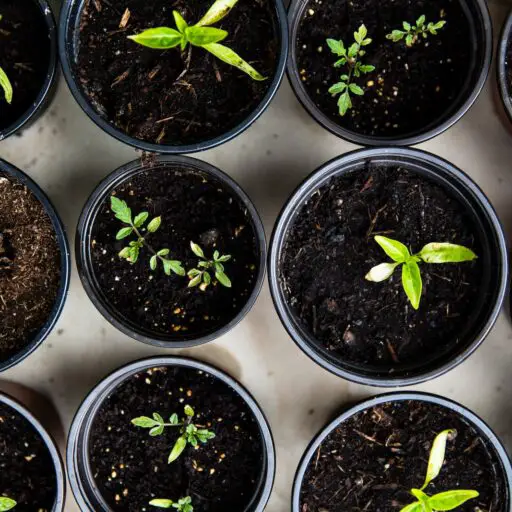Support our educational content for free when you purchase through links on our site. Learn more
Imagine stepping out of your front door and into a vibrant oasis where neighbors gather, laughter fills the air, and fresh produce is just a few steps away. Community gardens are more than just patches of green; they are powerful tools for fostering connections, promoting health, and enhancing the environment. Did you know that community gardens can increase property values by up to 15%? 📈 In this article, we’ll explore five amazing benefits of community gardens that go beyond just growing food. From improving mental health to boosting local economies, these gardens are changing the way we connect with our communities and the planet.
So, whether you’re a seasoned gardener or just curious about how to get involved, stick around! We’ll share insights, tips, and even some surprising statistics that will make you want to dig in and start a community garden of your own.
Key Takeaways
- Enhances community cohesion: Community gardens foster social connections and a sense of belonging among neighbors.
- Promotes healthier lifestyles: Access to fresh produce encourages better nutrition and reduces the risk of chronic diseases.
- Boosts environmental awareness: These gardens promote sustainability and improve local ecosystems.
- Provides educational opportunities: Community gardens serve as hands-on learning environments for all ages.
- Increases food security: They help improve access to fresh fruits and vegetables, especially in food deserts.
Ready to get started on your gardening journey? 👉 Shop for gardening tools on Amazon or Walmart to equip yourself for success! 🌼
Table of Contents
- Quick Tips and Facts
- The Rich History and Evolution of Community Gardens
- What Is a Community Garden?
- 5 Amazing Benefits of Community Gardens
- Best Types of Crops for Community Gardens
- Public Health Benefits of Community Gardens
- Explore More Ways to Promote Positive Community Change
- Quick Tips for Starting Your Own Community Garden
- Conclusion
- Recommended Links
- FAQ
- Reference Links
Quick Tips and Facts
As gardeners at Community Gardening™, we’re excited to share our knowledge on the benefits of community gardens. Did you know that community gardens can increase access to fresh produce and promote healthier lifestyles? 🥗 According to the United States Department of Agriculture (USDA), community gardens can also enhance community cohesion and support environmental sustainability. To learn more about how community gardens can make money, check out our article on How Community Gardens Make Money: 12 Surprising Strategies for Profit in 2025! 🌱.
Key Statistics
Here are some key statistics on community gardens:
- Over 18,000 community gardens in the United States and Canada 🌟
- Community gardens can increase property values by up to 15% 📈
- Community gardens can provide access to fresh produce for over 1 million people 🥗
The Rich History and Evolution of Community Gardens

Community gardens have a rich history dating back to the 19th century. The first community garden in the United States was established in 1890 in Detroit, Michigan. Since then, community gardens have evolved to become an integral part of urban planning and community development. To learn more about the history of community gardens, check out our article on The History of Community Gardens 📚.
Historical Timeline
Here’s a brief timeline of the evolution of community gardens:
- 1890: First community garden established in Detroit, Michigan
- 1900s: Community gardens become popular in urban areas
- 1960s: Community gardens become a symbol of social change and community empowerment
- 2000s: Community gardens become a key component of urban planning and community development
What Is a Community Garden?
A community garden is a shared outdoor space where people come together to grow their own fruits, vegetables, and flowers. Community gardens can be found in urban, suburban, and rural areas and can be managed by community members or outside organizations. To learn more about community gardens, check out our article on What Is a Community Garden? 🌼.
Types of Community Gardens
There are several types of community gardens, including:
- Urban community gardens: Located in urban areas, these gardens provide a green oasis in the midst of concrete and steel.
- Suburban community gardens: Located in suburban areas, these gardens provide a space for residents to grow their own fruits and vegetables.
- Rural community gardens: Located in rural areas, these gardens provide a space for residents to grow their own fruits and vegetables and connect with their community.
5 Amazing Benefits of Community Gardens
Community gardens offer numerous benefits to individuals, families, and communities. Here are five amazing benefits of community gardens:
1. Enhancing Community Cohesion and Social Connections
Community gardens provide a space for people to come together and connect with their community. According to a study by the National Institute of Health, community gardens can enhance community cohesion and promote social connections. To learn more about community garden events, check out our article on Community Garden Events 🌟.
2. Promoting Healthier Lifestyles and Nutrition
Community gardens provide access to fresh produce, which can promote healthier lifestyles and improve nutrition. According to the Centers for Disease Control and Prevention (CDC), community gardens can also reduce the risk of chronic diseases such as obesity and diabetes. To learn more about garden design ideas, check out our article on Garden Design Ideas 🌿.
3. Boosting Environmental Awareness and Sustainability
Community gardens can boost environmental awareness and promote sustainability. According to the Environmental Protection Agency (EPA), community gardens can also reduce greenhouse gas emissions and improve air quality. To learn more about garden maintenance tips, check out our article on Garden Maintenance Tips 🌸.
4. Providing Educational Opportunities and Skill Development
Community gardens provide educational opportunities and skill development for people of all ages. According to a study by the National Gardening Association, community gardens can also promote environmental literacy and support STEM education. To learn more about community garden policies, check out our article on Community Garden Policies 📚.
5. Increasing Access to Fresh Produce and Food Security
Community gardens can increase access to fresh produce and improve food security. According to the Food and Agriculture Organization (FAO), community gardens can also reduce food waste and promote sustainable agriculture. To learn more about benefits of community gardens, check out our article on Benefits of Community Gardens 🥗.
Best Types of Crops for Community Gardens
When it comes to community gardens, the type of crops to grow can vary depending on the climate, soil, and available space. Here are some of the best types of crops for community gardens:
- Leafy greens: Lettuce, kale, spinach, and collard greens are all great options for community gardens.
- Herbs: Basil, cilantro, and parsley are all easy to grow and can add fresh flavor to a variety of dishes.
- Vegetables: Tomatoes, peppers, and cucumbers are all popular choices for community gardens.
- Fruits: Strawberries, blueberries, and raspberries are all great options for community gardens.
Public Health Benefits of Community Gardens
Community gardens can have numerous public health benefits, including:
- Increased access to fresh produce: Community gardens can provide fresh produce to people who may not have access to it otherwise.
- Improved mental health: Community gardens can provide a sense of community and connection, which can improve mental health.
- Reduced risk of chronic diseases: Community gardens can provide opportunities for physical activity, which can reduce the risk of chronic diseases.
Explore More Ways to Promote Positive Community Change
Community gardens can be a powerful tool for promoting positive community change. Here are some ways to explore more ways to promote positive community change:
- Get involved in your local community garden: Join a local community garden and get involved in the decision-making process.
- Start a community garden in your neighborhood: If there isn’t a community garden in your neighborhood, consider starting one.
- Partner with local organizations: Partner with local organizations to promote community gardens and support community development.
Quick Tips for Starting Your Own Community Garden
Starting your own community garden can be a rewarding experience. Here are some quick tips to get you started:
- Find a location: Look for a location that gets plenty of sunlight and has access to water.
- Build a team: Recruit a team of dedicated volunteers to help with the garden.
- Plan your garden: Plan your garden carefully, taking into account the type of crops you want to grow and the available space.
- Seek funding: Consider seeking funding from local organizations or government agencies to support your community garden.
To learn more about community garden events, check out our article on Community Garden Events 🌟.
For gardening tools and supplies, consider shopping on:
- Amazon: Search for gardening tools on Amazon | Amazon Gardening Best Sellers
- Walmart: Search for gardening tools on Walmart | Walmart Gardening Center
- Etsy: Search for gardening tools on Etsy | Etsy Gardening Category
- Burpee Official Website: Burpee Gardening Tools
- Miracle-Gro Official Website: Miracle-Gro Gardening Tools
To learn more about community gardens and how to get involved, check out our article on How Community Gardens Make Money: 12 Surprising Strategies for Profit in 2025! 🌱.
Conclusion

In summary, community gardens are not just patches of green in urban landscapes; they are vibrant hubs of social interaction, health improvement, and environmental sustainability. From enhancing community cohesion to providing fresh produce, the benefits are plentiful. 🌱 Whether you’re looking to grow your own food, connect with neighbors, or learn new gardening skills, community gardens offer something for everyone.
Positives:
- Fosters social connections and a sense of belonging.
- Promotes healthier eating habits and access to fresh produce.
- Encourages environmental stewardship and sustainability.
- Provides educational opportunities for all ages.
Negatives:
- Requires commitment and time from volunteers.
- Potential for conflicts among community members over garden management.
- Dependence on weather and local soil conditions.
Overall, we confidently recommend getting involved in a community garden near you! They are a fantastic way to enrich your life and the lives of those around you. 🌼
Recommended Links
-
👉 Shop Gardening Tools on:
- Amazon: Search for gardening tools on Amazon
- Walmart: Search for gardening tools on Walmart
- Etsy: Search for gardening tools on Etsy
- Burpee Official Website: Burpee Gardening Tools
- Miracle-Gro Official Website: Miracle-Gro Gardening Tools
-
Books on Community Gardening:
FAQ

How do community gardens promote social connections and a sense of community?
Community gardens serve as a common ground where individuals from diverse backgrounds come together. They foster relationships through shared responsibilities, such as planting, weeding, and harvesting. This collaborative effort not only builds friendships but also creates a sense of ownership and pride in the community. As noted by the National Gardening Association, these social interactions can lead to stronger community ties and increased civic engagement.
Read more about “🌱 15 Essential Steps to Launch Your Community Vegetable Garden Project in 2025!”
What are the environmental benefits of participating in a local community garden?
Participating in a community garden can significantly benefit the environment. Community gardens help to reduce urban heat, improve air quality, and promote biodiversity by providing habitats for various species. They also encourage sustainable practices, such as composting and organic gardening, which can reduce the carbon footprint associated with food production. According to the Environmental Protection Agency (EPA), these gardens can also help manage stormwater runoff and improve soil health.
Can community gardens help improve mental health and well-being through gardening activities?
Absolutely! Gardening has been shown to reduce stress, anxiety, and depression. Engaging with nature and participating in physical activity can lead to improved mental health outcomes. A study from the University of Pennsylvania found that gardening can lead to a 60% reduction in feelings of depression. The act of nurturing plants and seeing them grow can also provide a sense of accomplishment and purpose.
How can I get involved in a community garden in my neighborhood and what are the benefits of volunteering?
Getting involved in a community garden is easier than you might think! Start by checking local community boards, social media groups, or websites dedicated to community gardening. Many gardens welcome volunteers, and you can often find opportunities to join through local non-profits or city programs. The benefits of volunteering include learning new gardening skills, meeting new people, and contributing to your community’s well-being. Plus, you’ll get to enjoy the fruits (and veggies!) of your labor! 🍅
Reference Links
- Benefits of Community Gardens – PHS Online
- USDA – Community Gardens
- Centers for Disease Control and Prevention (CDC)
- Environmental Protection Agency (EPA)
- National Gardening Association
- Food and Agriculture Organization (FAO)
For more insights, check out the 4 Benefits of Community Gardens and related articles. 🌻

